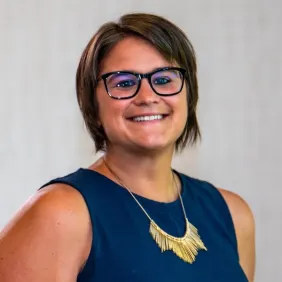Impact
How Women Will Shape Our Energy Future
Oct 22, 2020
During my time as an electrical engineering student at the Milwaukee School of Engineering, I was regularly mistaken for a nursing student around campus. Often, I was the only woman in my core science and math classes, and was a part of a staggeringly small percent in my field as a whole. Rather than be discouraged by this, I viewed my unique position as an opportunity to bring a different, yet necessary perspective to the table.
This gender disparity is not unique to engineering. Nationwide, across industries, women are underrepresented in science, technology, engineering and math fields. Our lack of representation in STEM is not only holding us back – it’s also holding those industries back. More than half of college graduates are women, but women hold just 25% of STEM careers.
Imagine the possibilities if that number was doubled.
These fields have everything to gain from counting more women among their numbers. Throughout history, women scientists have led some of the largest technological breakthroughs: Marie Curie was the first to discover radioactivity and invented the mobile X-ray unit. The first flight into space would not have been possible without the work of Katherine Johnson, Dorothy Vaughn, and Mary Jackson. Near and dear to renewables—solar powered homes became a reality when Maria Telkes applied her own technology of the first thermoelectric power generator, and batteries reached new heights when Olga D. Gonzalez-Sanabria played an instrumental role in the development of Long Cycle-Life Nickel Hydrogen Batteries that were used to power the International Space Station. Even with the limited representation historically, women have played an instrumental role in scientific and technical advancement that cannot be ignored.
In the energy industry, the gender imbalance is particularly egregious. Women represent 47 percent of the U.S. workforce, but just 26 percent of the solar workforce. Only about 20 percent of Manager, Director, President level positions in the solar industry are held by women.
I have been fortunate enough to see what happens when female representation in the clean energy sector increases. Today, I am a senior member of 8minute Solar Energy’s engineering team – which is led entirely by women. I have witnessed firsthand the potential when women in STEM are not celebrated just for being women, but for being experts, pioneers, and drivers in our fields. When we are recognized for our contributions and given the space and the power to expand our reach, we flourish.
My team and I have been able to achieve some incredible accomplishments, including cracking the code to be first movers on game changing bifacial technology deployment at utility scale, and the lowest-cost solar plant in the country, Eland Solar & Storage Center. At 8minute, we are proactively working to do our part in closing the gender gap in the solar industry. 38 percent of our leaders in STEM are women, and women are empowered in leadership positions across all teams.
As we look toward economic recovery in the wake of the COVID-19 pandemic, we have an important opportunity to build back a stronger, more diverse workforce. Moving forward, we need more perspectives driving innovation. If we want to realize the vision of a clean energy future, we must not only continue to prioritize increasing female representation in STEM, but also extend opportunities to all underrepresented communities.
To young people interested in pursuing careers in STEM, I say this: these fields may be well-established, but are ever changing and there will always be space for breakthroughs and innovation. Be bold. Trust yourself. We need your voice. You learn by asking questions, and as an industry we grow as more people like you realize they have something to contribute and speak up to ask questions and share ideas.
And to the young women who, like me, find themselves the only woman in their classroom: don’t be discouraged. You’re exactly where you need to be. You are a pioneer, and you are helping to build the future.

